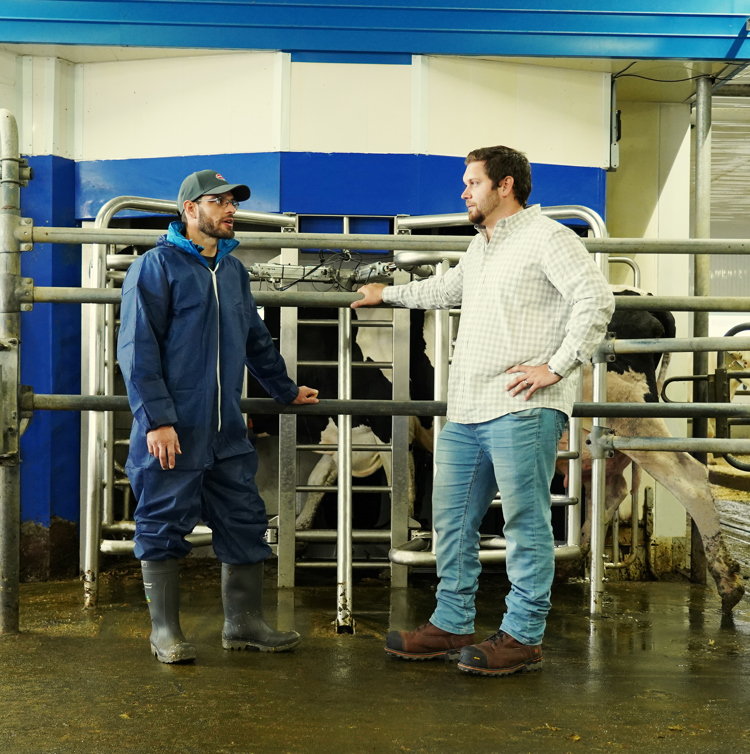Ferme Val Chaudière
Back: Sabrina Rhéaume, Dominique Faucher and Alexi Hototte
In middle: Élena, Justin, Josianne, Mégane, Gabriel Faucher and Nancy Lacasse.
Front: Joannie and Britany.
Val Chaudière Farm bought their first milking robot in 2006. Today, they own three robots. Their objectives for robotic milking were to optimize their daily tasks and to increase their cows’ longevity.
During the farm’s transition, they only had to make a few adjustments to the animals’ nutrition and to the routine. Thanks to their mechanical skills, they’re able to maintain and repair their robots themselves.
The farm’s business model is unusual. To facilitate the farm’s management, they buy cows from another producer to meet the herd replacement needs. The purchasing budget for these cows comes from hay sales and from the savings in livestock costs. With a diet composed of 90% corn silage, a very large percentage of their grassland acreage is cultivated with hay and sold across the province of Quebec. Last year, the company sold 2000 individually wrapped large square bales.
To get the most fibre possible and to avoid putting hay or straw in the animals’ diet, they produce enough silage to optimize their yield and quality. The only fibre they use comes from 3 kg to 4 kg of hay from large square bales, which is served in the morning as dry hay before serving the PMR (partially mixed ration).
This PMR is mainly composed of corn silage at 90%, of 0.5 kg of hay silage from large square bales, of a personalized feed and of triticale produced on the farm. It’s prepared twice a day and served every two hours (12 times a day) by a fully automated system composed of a mixer and belt feeders for the distribution. Serving the ration 12 times a day allows them to increase feed intake, reduce sorting, and avoid pushing-up feed or using a feed pusher. Finally, a robot feed and a 26% fresh cow supplement (protein and energy) is distributed by the milking robots to the fresh cows.
This way, milking can be done over a 24-hour period and it stimulates night milkings.
The farm’s future plans for the next few years relate to the purchase of land, improved field management, crop optimization and continuous improvement in the barn. What are they most proud of? Having improved the efficiency of the farm quickly without having to resort to outside labor, while diversifying their fields of activity and income. All this while maintaining a good work-family balance.

